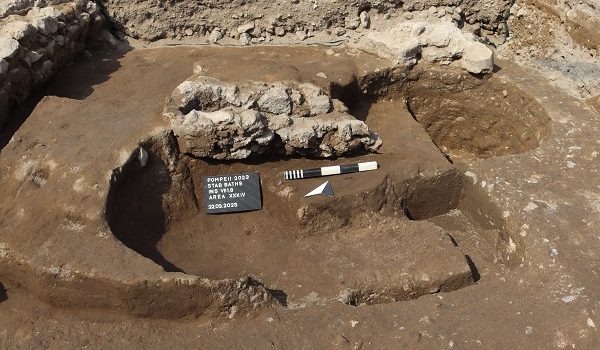The Stabian Baths in Pompeii are prominently located at the intersection of the city’s two major streets, the Via Stabiana and the Via dell’Abbondanza. In their last stage of use, they occupied a terrain of about 3300 m2, thus constituting the largest public bath building in town in use after the earthquake of AD 62. The baths provided two separate sections for men and women. Three entrances from three different streets led to the men’s section that included a large palaestra (C) with a natatio (D) and garden nymphaea (F, G), an apodyterium (II), a frigidarium with a cold-water pool (IV), a tepidarium (III) with a collective immersion pool, and a caldarium (V) with a cold-water labrum and collective immersion pool. The women’s section was accessible from two different streets and included only an apodyterium (XI) with a make-shift cold-water pool, a tepidarium (X) and a caldarium (IX). Since their excavation in the 19th century, the Stabian Baths played a major role for the reconstruction of the development of ancient bathing culture.

Public Saunas in the Stabian Baths – A privilege of men
Since their excavation from 1853 to 1859, the Stabian Baths have always been intriguing and noteworthy, for both scholars and visitors. They have become even more fascinating and important with the completely unexpected discovery of two round rooms in the courtyard of the baths that were excavated in 2021 and 2023. These rooms can be identified as ancient saunas or sweat baths (laconica). The aim of this article is to present the evidence of these laconica and to assess their socio-cultural significance. Since both laconica had to be reburied at the end of the excavation campaigns, the millions of visitors who enter and cross the courtyard of the baths every year have no idea what lies beneath their feet. It is hoped that this article can change this and provide some insights into Pompeii’s multifaceted and fascinating (re)buried history and life.

